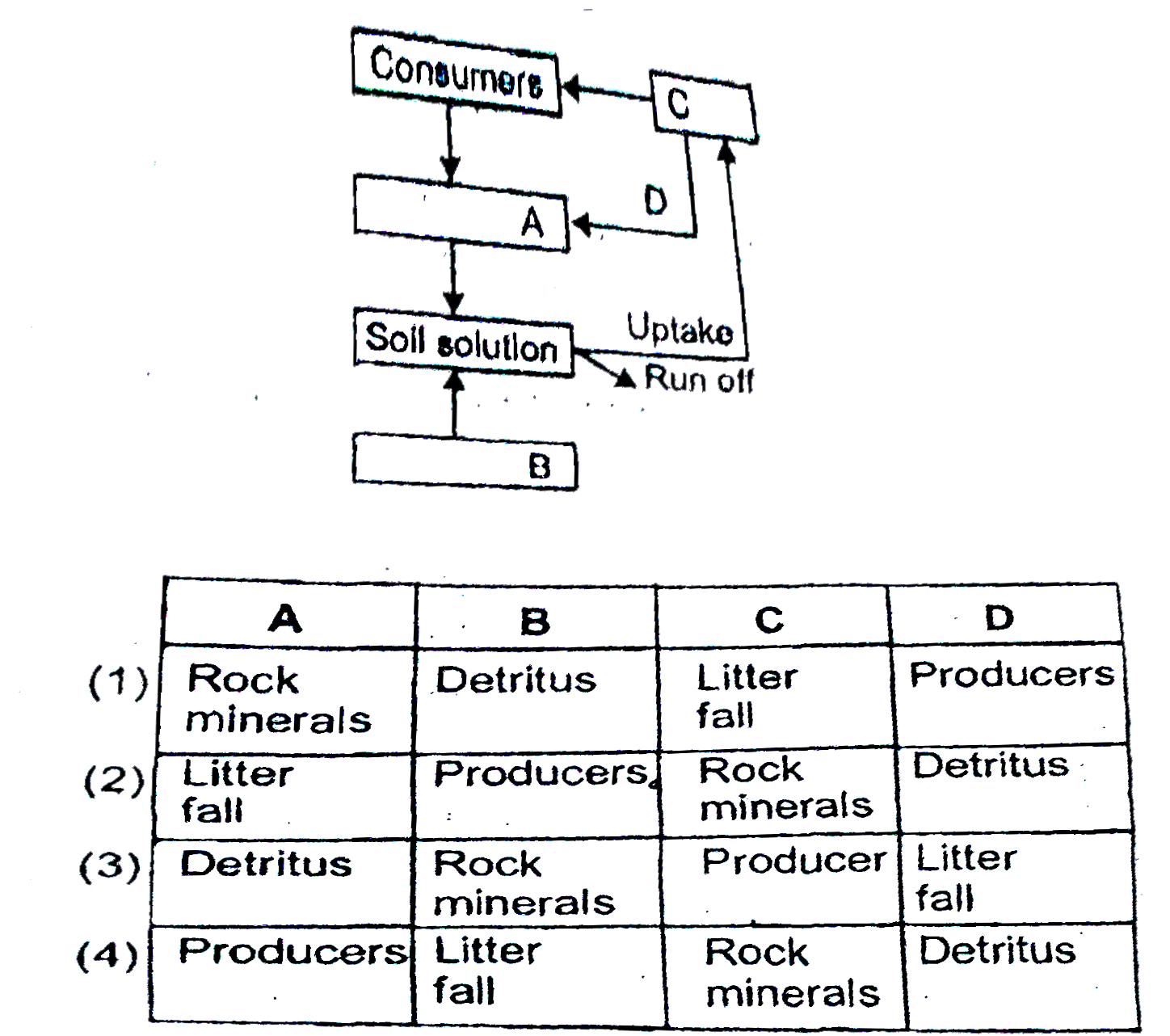Phosphorus cycle differs from carbon cycle as the former
has volcanic activity as the additional source
does not have role of decomposition bacteria in mineral recycling
has much smaller in ports through rainfall
is significantly affected by deforestation and burning of fossil fuels
To solve the question "Phosphorus cycle differs from carbon cycle as the former," we need to analyze the options provided and understand the key differences between the phosphorus cycle and the carbon cycle.
1. Understand the Nature of the Cycles:
- The carbon cycle is primarily a gaseous cycle, meaning that carbon exists in the atmosphere as carbon dioxide (CO2) and is exchanged between the atmosphere, living organisms, and the earth.
- The phosphorus cycle, on the other hand, is a sedimentary cycle, which means phosphorus does not have a gaseous phase and primarily cycles through soil and water.
2. Evaluate Each Option:
- Option A: Has volcanic activity as additional source:
- Both cycles involve volcanic activity, so this option is incorrect.
- Option B: Do not have role of decomposing bacteria in mineral recycling:
- Decomposing bacteria play a significant role in the phosphorus cycle by recycling phosphorus. Thus, this option is also incorrect.
- Option C: Has much smaller inputs through rainfall:
- Phosphorus does not exist in a gaseous form and is not significantly contributed by rainfall, making this option a potential correct answer.
- Option D: Significantly affected by deforestation and burning of fossil fuels:
- This is more relevant to the carbon cycle, as deforestation and fossil fuel burning release CO2 into the atmosphere. Therefore, this option is incorrect.
3. Identify the Correct Answer:
- After evaluating all options, the correct answer is Option C: Has much smaller inputs through rainfall. This highlights a key difference between the phosphorus cycle and the carbon cycle.
Final Answer:
The phosphorus cycle differs from the carbon cycle as the former has much smaller inputs through rainfall.
- The carbon cycle is primarily a gaseous cycle, meaning that carbon exists in the atmosphere as carbon dioxide (CO2) and is exchanged between the atmosphere, living organisms, and the earth.
- The phosphorus cycle, on the other hand, is a sedimentary cycle, which means phosphorus does not have a gaseous phase and primarily cycles through soil and water.
- Option A: Has volcanic activity as additional source:
- Both cycles involve volcanic activity, so this option is incorrect.
- Option B: Do not have role of decomposing bacteria in mineral recycling:
- Decomposing bacteria play a significant role in the phosphorus cycle by recycling phosphorus. Thus, this option is also incorrect.
- Option C: Has much smaller inputs through rainfall:
- Phosphorus does not exist in a gaseous form and is not significantly contributed by rainfall, making this option a potential correct answer.
- Option D: Significantly affected by deforestation and burning of fossil fuels:
- This is more relevant to the carbon cycle, as deforestation and fossil fuel burning release CO2 into the atmosphere. Therefore, this option is incorrect.
- After evaluating all options, the correct answer is Option C: Has much smaller inputs through rainfall. This highlights a key difference between the phosphorus cycle and the carbon cycle.
The phosphorus cycle differs from the carbon cycle as the former has much smaller inputs through rainfall.
Topper's Solved these Questions
Similar Questions
(a) Trace the succession of plants on a dry bare rock.
(b) How does phosphorus cycle differ from carbon cycle. ?
View Solutionwater cycle
View SolutionKrebs cycle is
View SolutionCalvin cycle is
View SolutionKreb's cycle
View SolutionIn Krebs cycle
View SolutionAssertion: Phosphorus cycle is an imperfect cycle as a sufficient amount of phosphorus combines with Al3+Fe2+ and Ca2+ to form insoluble and unavailable salts.
Reason: Phosphate circulation in abiotic environment in lithosphere as well as in atmosphere.
View SolutionIn Krebs cycle,
View SolutionIn Kreb's cycle
View SolutionGiven below is a simplified model of phosphorus cycling in a terrestrial ecosystem with four blanks (A-D) . Identify the blanks.

View Solution
